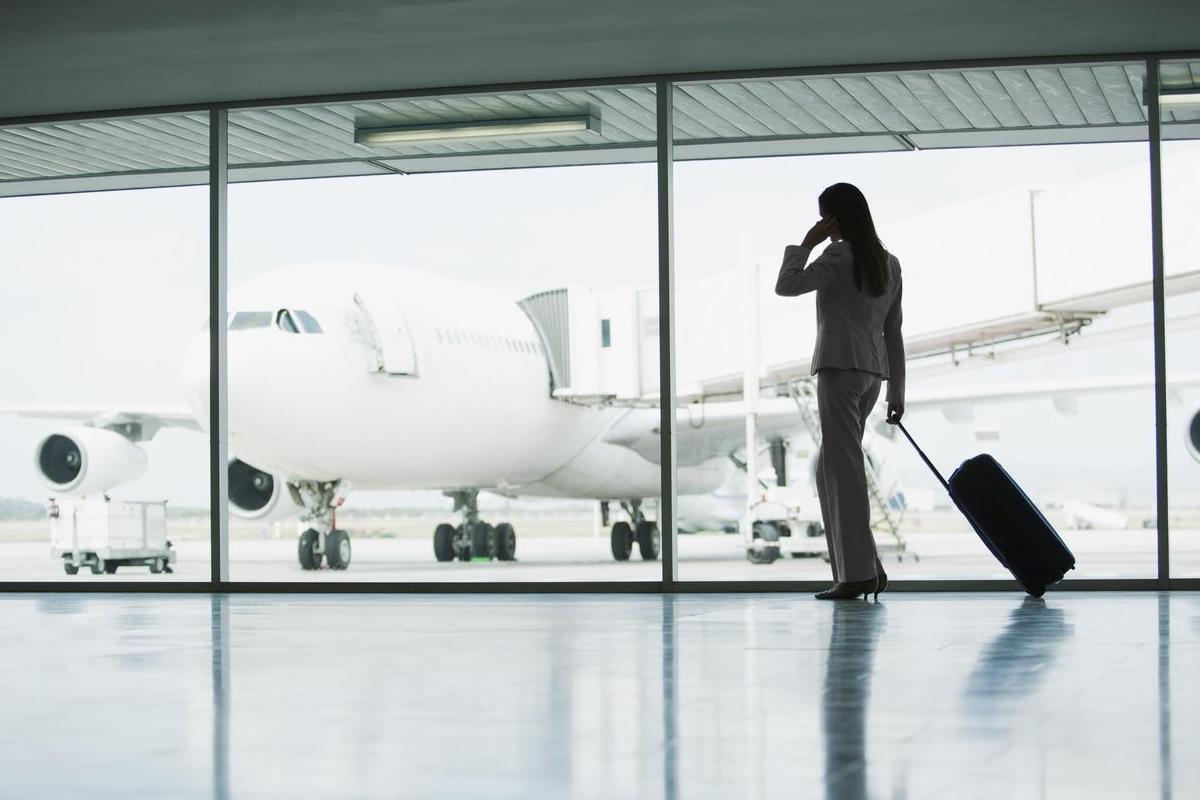Skift Take
Business travel recovery trends differ by company size and sector, but regardless of their circumstances, organizations large and small are seeing now as a critical time to reconsider return on investment of business travel, to update their approach to sustainability and traveler well-being, and to digitize and automate the travel and expense process.
This sponsored content was created in collaboration with a Skift partner.
The business travel sector may be recovering more slowly than leisure travel, but demand remains strong. While the Global Business Travel Association (GBTA) forecasted a lag in corporate travel spending, the market isn’t a monolith. Certain sectors — like technology, as well as large corporations across industries — have been hesitant to ramp up their global travel programs, and their effect on top-level figures obscures the fact that many small and mid-size businesses have long since returned to the road in force.
These trends are converging at a time when new workplace norms are highlighting the need for companies to rethink their travel management and expense policies.
SkiftX spoke with Gunther Bright, executive vice president of global commercial services at American Express, to explore how the company’s corporate and business clients, consisting of nearly 70 percent of S&P 500 companies, are adjusting to the post-pandemic environment. While recovery trends differ by company size and sector, organizations are broadly reconsidering how to calculate the return on investment (ROI) of business travel, manage business travel’s impact, and digitize and automate the travel and expense process to create more seamless payment solutions.
SkiftX: Can you give some color on the recovery of business travel — what does that look like among your client base? Where are you seeing the most robust recovery?
Gunther Bright: In our third quarter 2022 earnings, we noted that the strength of the overall travel recovery has exceeded our expectations throughout the year. Total travel and entertainment (T&E) spending was up 57 percent from a year earlier, and overall T&E spending in our international markets surpassed pre-pandemic levels for the first time that quarter, both on a FX-adjusted basis.
T&E spending in our consumer and small business segments has already surpassed pre-pandemic levels. Small and mid-size businesses have seen a quicker return than global and large companies, with T&E spending by small and mid-size enterprises up 48 percent from a year earlier on an FX-adjusted basis. While we’re not back to 2019 levels in our global and large segment, T&E spending by these customers continued to recover in the third quarter, and we believe will ultimately reach pre-pandemic levels again in the future.
SkiftX: Overall, what are you hearing and seeing from clients when it comes to business travel right now? Where is the most interest and demand?
Bright: More and more businesses are measuring the ROI of business travel, meaning that companies are looking at the costs and the revenues, either direct or indirect, associated with different types of business travel. For example, businesses are prioritizing travel for client meetings and client relationships, and of course for sales and acquisition. They are also prioritizing travel for learning and development opportunities, such as conferences, training, and networking.
According to our recent American Express Meeting & Events Trendex, which surveyed 305 corporate meeting planners and event organizers, 97 percent of corporate event planners surveyed say company meetings and events are more important or equally important today compared to pre-pandemic1. I think with this, combined with a focus on ROI, the value of business travel will really be proven out in this new world.
SkiftX: What do American Express cards bring to the table when it comes to sustainability in travel? How do you see corporate clients using card data to help inform their business decisions?
Bright: There are new imperatives when it comes to corporate responsibility and sustainable business travel, with a particular spotlight on large and global businesses. A March 2022 survey we did of decision makers at global and large companies found that 80 percent have a plan to reduce direct emissions/carbon footprint in the next 10 years as it relates to business travel programs, so this is certainly top-of-mind.
American Express has its own goals to help promote a low-carbon future. As part of our ESG strategy to advance climate solutions, we have committed to developing new, low-carbon product innovations. This includes a carbon offset referral suite, which provides U.S. corporate clients with a list of carbon offset providers that they may use to manage their carbon footprint.
SkiftX: What innovative projects and initiatives do you currently have underway? Can you provide the bigger picture and where you see these innovations playing into the business travel space?
Bright: Since the pandemic, the drive toward digital has intensified. We’re leveraging enhanced virtual payment solutions to help travelers eliminate the need for manual intervention in expense reports. Virtual cards can be a faster, more flexible way for individuals on business travel, including employees, contractors, freelancers, and recruits to pay on the go, and for companies to set spending controls and timeframes, along with simple reconciliation.
We’re also very focused on helping businesses automate their payments process. We are seeing more interest from travel and meeting planners to move toward digital payments, especially since the pandemic when people began working from home more regularly and accounting teams were dispersed. This has really simplified budgeting, increased visibility into team-wide or project-wide purchasing, and made payments reconciliation much easier.
Relationships are also key. We are thrilled to be working with incredible partners like Cvent — a market-leading meetings, events, and hospitality technology provider — where together we are enhancing our offerings for corporate event and meeting planners, so they are more automated and seamless.
SkiftX: We’ve seen a growing need among corporate meeting planners to get a better handle on payment capabilities for meetings and events. What are you hearing from corporate meeting planners? What trends are you seeing here related to corporate meeting cards?
Bright: We’re hearing that the top things that meeting planners want in their payments and spend management programs are a simple user experience, enhanced security, integrated payments capabilities, greater budget visibility, and automation. According to the American Express Meeting & Events Trendex, 89 percent of corporate event planners surveyed report that they intend to further automate their payment process over the next year. Our enhanced features with Cvent address these needs.
The key takeaway is that cards and virtual payments allow more visibility and tracking of meetings spending and budgeting, often faster and more seamless reconciliation, and a more centralized view of all the moving pieces. Whether for meetings large or small, we’re seeing that meeting planners are really shifting toward digital platforms for these reasons. And when it comes to booking, they’re also leveraging platforms that are designed for smaller, ad hoc meetings to bring internal teams together.
For more information about American Express’ business travel and expense management solutions, click here.
This content was paid for by American Express and created in collaboration with Skift’s branded content studio, SkiftX.
Have a confidential tip for Skift? Get in touch
Tags: american express, amex, business travel, SkiftX Showcase: Technology, spending, travel tech, travel technology

